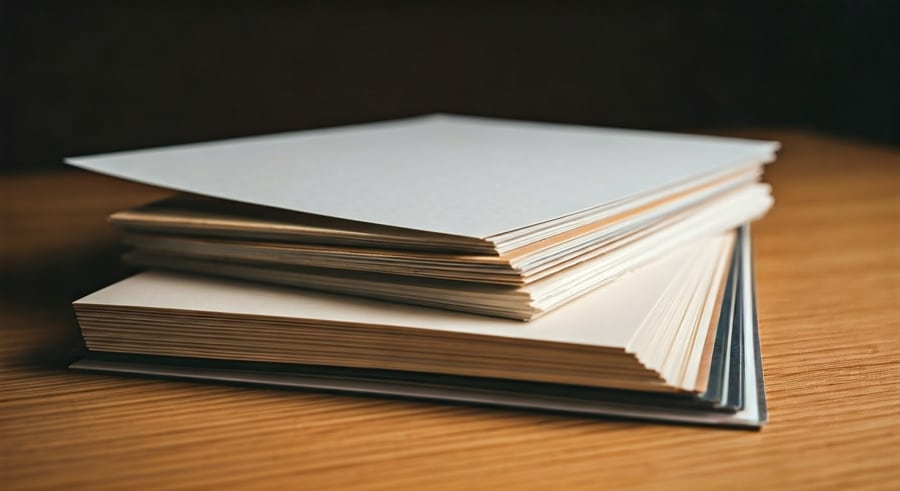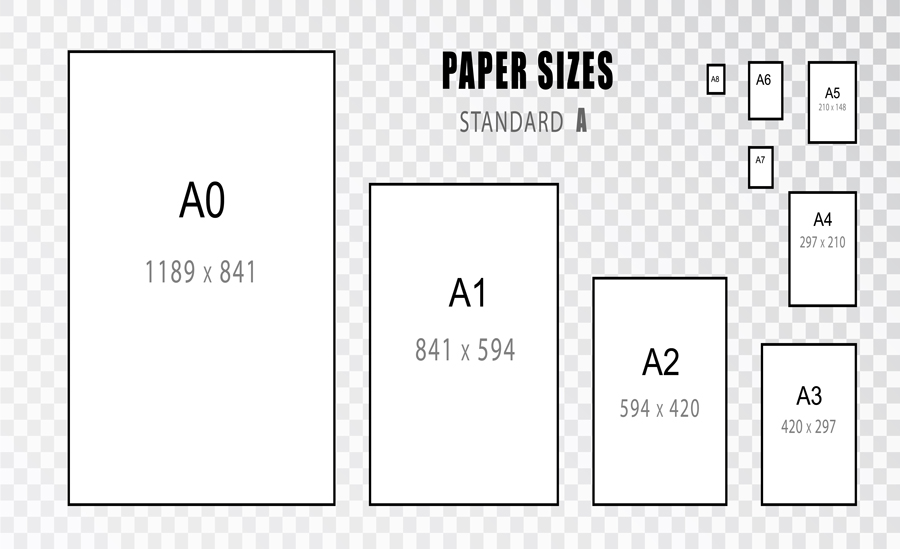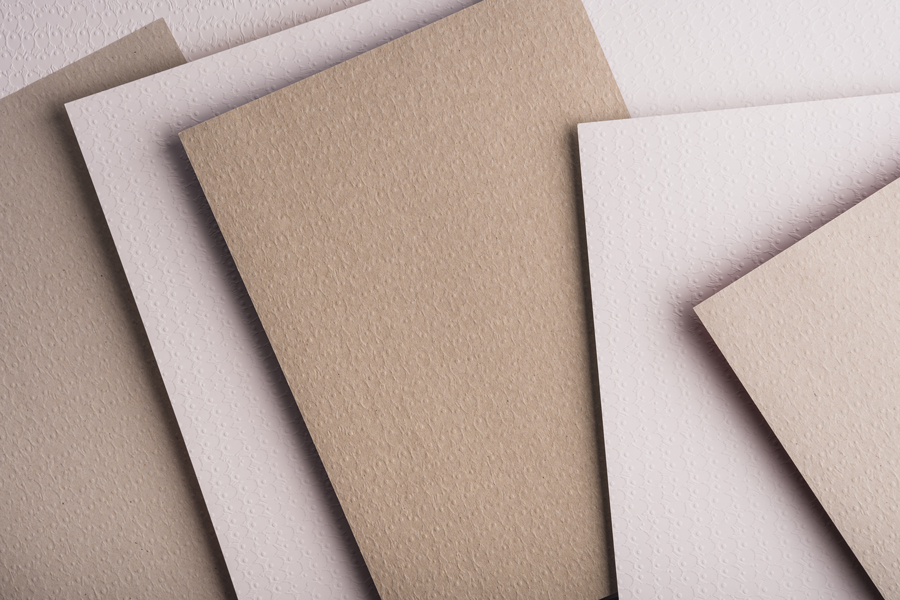Choosing the appropriate paper type for book printing is an indispensable, often overlooked aspect of publication. When deciding on different paper types for book printing, several factors come into play. The selection directly impacts the book’s appearance, the ease of reading, and its overall appeal. As content creators, we want to optimize our choices to offer our readers and clients quality, convenience, and value for money. This informative guide's commitment is to elucidate the variety of paper options available for book printing, detailing their respective features, advantages, and ideal use cases.

With the plethora of paper stocks in the market, choosing the right type can initially seem overwhelming. However, it's vital to acquaint ourselves with specific types of paper primarily adopted in book publishing. They include offset paper, coated papers, uncoated papers, and different finishes. Each type possesses its unique qualities fitting for distinct applications, thus adding diversity to the publishing world. Here is book printing paper types.
Offset paper is the best paper for book printing, lending compatibly to almost any book and any binding method. Primarily due to its non-smudging property, offset paper is often the go-to for workbooks. Below is a quick summary of what offset paper offers:
|
Features of Offset Paper |
Description |
|---|---|
|
Brightness |
94 with a new blue-white shade |
|
Qualities |
Superior printability, uniformity, and durable performance |
|
Strength |
Excellent strength, bulk, and stiffness |
|
Basis Weights |
Comes in 60lb, 70lb, and 80lb variants such as 60lb White or Cream Offset, 70lb White or Cream Offset, and 80lb White Offset |
Offset paper not only provides efficient utility but also enhances readability with its bright white finish, offering a touch of professionalism and quality to your content.
The subject of coated papers covers options like gloss and silk. This type of paper has a clay coating that increases the paper's vibrancy and intensity, making it exceptionally suited for books laden with images or photos and vibrant ink colors. Within the family of coated papers, silk, with its gentle low-gloss sheen, strikes a balance between image highlighting and comfortable text reading. Conversely, for visual-heavy, text-light books, a gloss sheet provides the best vibrancy and contrast for ink applications. A popular use for coated paper is in cookbooks, which often require a wipeable surface resilient to kitchen mishaps.
Often an understated choice, uncoated papers bring their unique charm to printing. Primarily used for novels and other text-heavy publications, uncoated papers offer a classic, authentic vibe with a smooth finish. Their advantages include:
When discussing paper weights, a term frequently encountered is GSM – grams per square meter. GSM gives an indication of the paper's thickness, which is central in determining the book’s durability and overall feel. Comprehending the differences between various GSM levels aids in selecting the most suitable paper weight to match the style, target audience, and expected handling of the book.
60 lb., 70 lb., and 80 lb. paper weights are crucial considerations in book printing. These weights determine the thickness and sturdiness of the paper, impacting the overall feel of the final product. Depending on the type of book and its intended use, selecting the appropriate weight is essential for ensuring durability and quality. Print projects requiring a lighter feel may opt for 60 lb., while those desiring more robust pages might lean towards 80 lb. Understanding these distinctions aids in making informed decisions for your printing needs.
Choosing between 80 lb. and 100 lb. gloss or silk text paper types can significantly impact the look and feel of your printed material. The higher the weight, the more substantial the paper feels. These paper stocks are ideal for projects requiring a polished finish, such as high-quality magazines or promotional materials. The gloss finish offers a shiny, reflective surface that enhances color vibrancy, while the silk text provides a luxurious feel with a subtle sheen, perfect for premium publications.

Choosing the right paper size is essential for both the aesthetic and functional success of your printed book. It affects layout, readability, and production cost.
Each size choice should reflect your content type, audience, and design goals.

Choosing the right paper for your project means matching its weight, finish, and color to your needs—whether it’s a photo book, manual, or business card. Gloss, silk, and uncoated options each offer different aesthetics and durability. Focus on texture, opacity, and weight to ensure a high-quality final product.
Consider the purpose of your project and the intended audience when selecting book printing paper types. Assess the level of durability required based on how the book will be used and stored. Factor in the desired finish – whether a smooth gloss or matte texture would best complement the content. Additionally, evaluate the printing quality needed and the impact of paper type on color reproduction. By weighing these aspects carefully, you can make an informed choice that aligns with your project goals and audience expectations.
When considering paper color for book printing, choices are typically white, cream, or groundwood. The white paper gives a crisp, clean look suitable for various genres. Cream paper exudes warmth, favored for novels or poetry. Groundwood, often brownish-gray, offers a rustic feel ideal for certain themes. Each color evokes different moods and impressions, impacting how readers perceive your content. Selecting the right paper color is essential in conveying the intended message and enhancing the overall reading experience.
The cover material of a book is more than just a protective layer—it’s a crucial element that affects how the book looks, feels, and lasts. Whether you're self-publishing or working with a printer, selecting the right cover material can make a big difference in the book’s appeal and functionality.
Ready to turn your manuscript into a finished product? At Ex Why Zed, we specialize in delivering professional book printing services across the UK, helping authors, creatives, educators, and businesses bring their ideas to life with precision and quality.
Whether you’re publishing a novel, producing training manuals, or printing a limited-edition art book, we offer customized printing solutions to match your exact specifications.
ExWhyZed makes book printing straightforward, efficient, and reliable for individuals and organizations of all sizes. Get a quote.
In conclusion, selecting the appropriate paper for book printing types, certified by the Forest Stewardship Council, is crucial for the success of your project. Consider factors like paper weight, color, and environmental impact to make an informed choice. Opt for environmentally friendly options and ensure the book cover material aligns with your vision. By prioritizing quality paper stock and eco-conscious selections, you can enhance the overall appeal and sustainability of your printed materials. Choose wisely to leave a lasting impression on your readers and contribute positively to the environment.
In book printing, paper weight impacts the feel and durability of the final product. Lighter weights like 60 lb. are suitable for novels, while heavier options provide sturdiness for art books. Choosing the right weight ensures your book matches its intended use and aesthetic appeal.
Consider using recycled paper or tree-free options like bamboo or cotton for eco-friendly book printing. These alternatives reduce environmental impact while maintaining quality.
Consider the paper weight, finish (gloss or silk), and color options (white, cream, groundwood). Factor in environmental friendliness and cover material importance for the ideal choice.